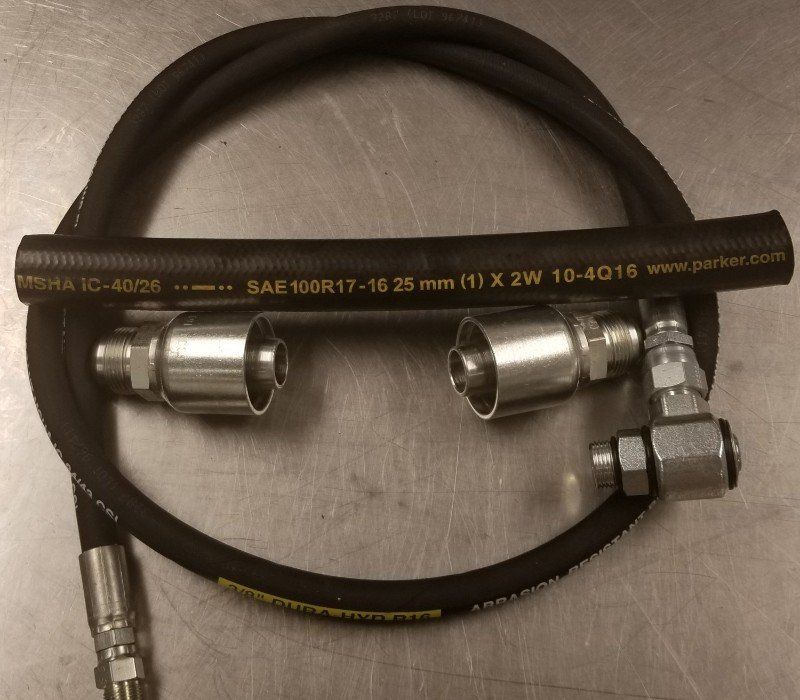Replacement of Hydraulic Hose Assemblies
When it comes to replacing a hydraulic hose assembly how can you be certain you get the correct hose and fittings for your application?
Replacing a hydraulic hose can be simple straightforward
process by using the STAMP method.
Determine the Size of the Inner Diameter of hose you need this is marked along the outside hose cover in dash numbers (1/16th inch increments), metric numbering (Typically given in millimeters), and standard inch size (Marked as a fraction or number). Secondly, verify the ends you need by measuring the thread size and confirming the type JIC, NPT, ORFS etc.
The Temperature of the media being conveyed through the hose as well as the ambient temperature of the environment around the hose affects its longevity. Extremely high or low media temperature can cause hydraulic hose to lose its flexibility and become brittle shortening the service life. Sustained extreme ambient temperatures can break down the hose cover and reinforcement causing hose failure from the outside in.
Application in which the hose is to be used must also be considered. Will your hose be subjected to abrasion, Whether or not the routing of the hose confined or restricted, Will the hose see mechanical loads or strain during operation. Another factor could be conduction of electricity and the use of non-conductive hydraulic hose for safety.
The Media, or what is being conveyed through the hose needs to be evaluated along with the environment it is exposed to. You should determine the fluid compatibility with the inner tube, the cover, fitting material, and O-rings where used. This will prevent premature failure by fluid or specific chemicals impregnating and breaking down the hose material.
The Pressure which the system produces should be considered. The maximum working pressure of the hose should exceed the maximum system pressure of the application in which it is used. Many hose manufactures design their hoses with a 4:1 burst pressure for your safety. A hose assembly’s maximum working pressure is the lesser of the rated working pressure of the hose and the end connection used.
Book mark this page and keep up to date!


